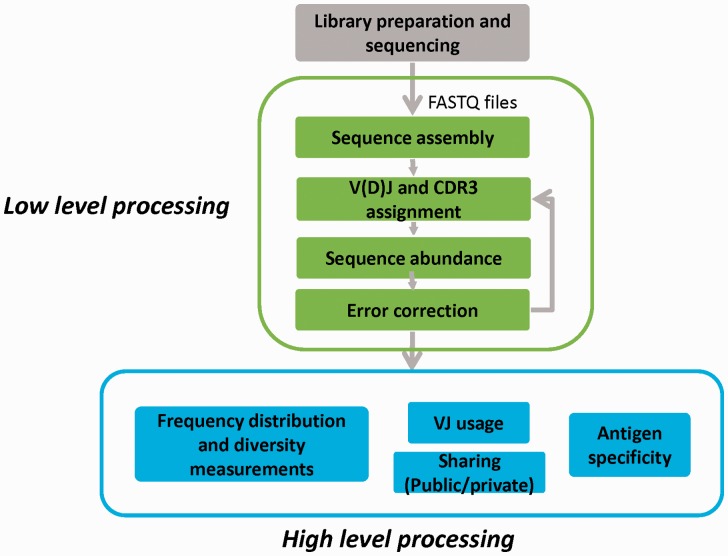Figure 2.
The main stages involved in the study of immune repertoires. Grey box (top): library preparation and sequencing. Green boxes (middle): low-level processing that includes sequence assembly, assignment to genomic V, D and J genes, extraction of CDR3 regions and error correction. See sections ‘Gene assignment’, ‘Sequence and abundance error-correction strategies’ and ‘Benchmarking and its challenges’ of this review. Blue boxes (bottom): high-level processing and analysis, which includes diversity measurements, and determining clonal frequency distributions, analysis of differential V and J usage, analysis of inter-individual sharing of TCR sequences (public versus private) and relationship between sequence and antigen specificity. See sections ‘High-level repertoire processing: revealing biological and clinical meaning’, ‘Measures of diversity’ and ‘Antigen specificity’ of this review.

